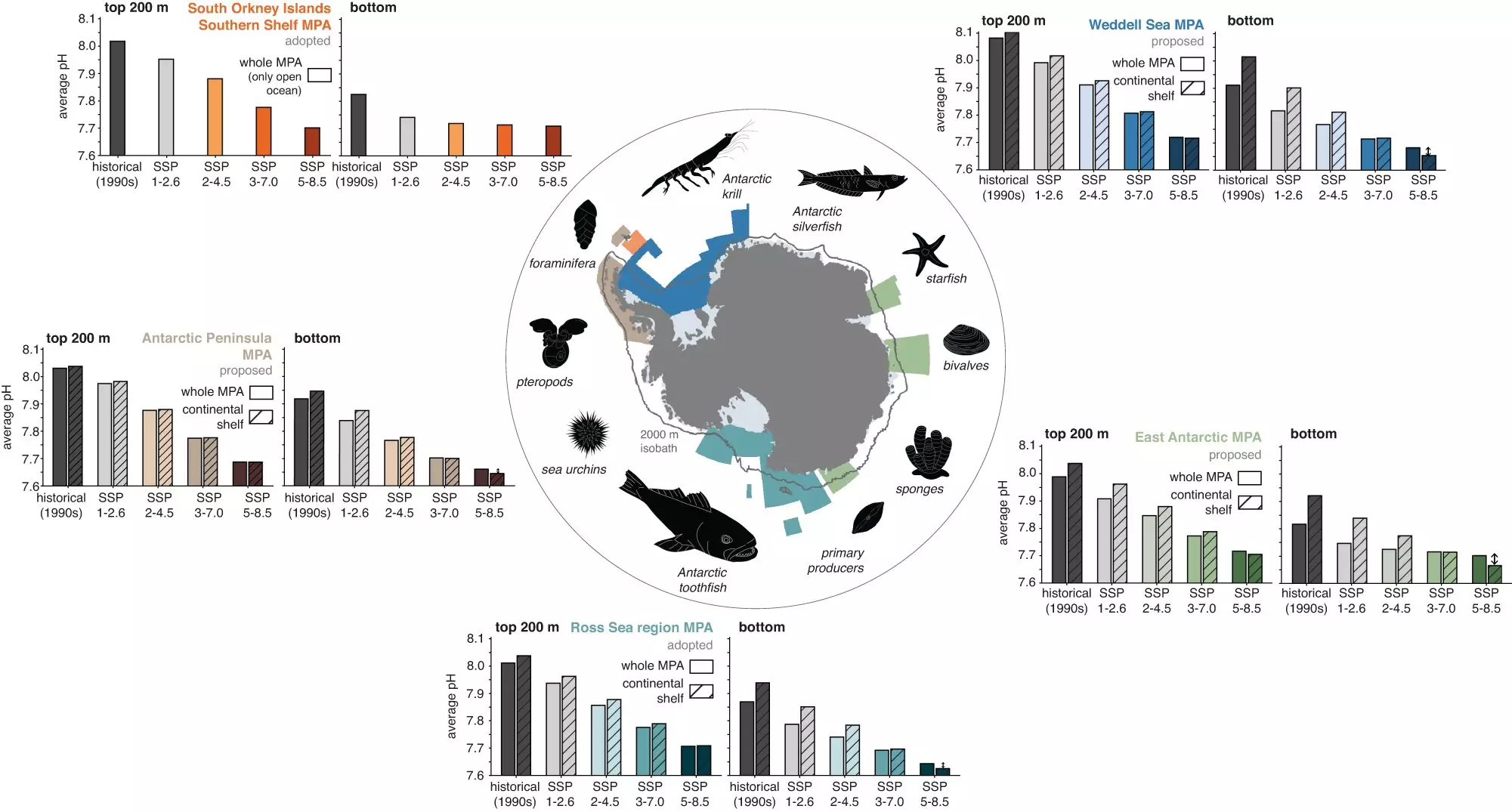Antarctica’s coastal waters face a dire future, as new research from the University of Colorado Boulder warns that the acidity levels could double by the end of the century. This concerning study reveals that the upper 650 feet (200 meters) of the Southern Ocean, a crucial habitat for countless marine species, is projected to experience over a 100% increase in acidity compared to levels in the 1990s. Published in the journal Nature Communications on January 4th, 2022, this research emphasizes the urgent need for action to mitigate the devastating effects of ocean acidification on the delicate ecosystems of Antarctica.
The oceans play a critical role in mitigating climate change by absorbing nearly 30% of the carbon dioxide (CO2) emitted globally. However, human-induced CO2 emissions are at the core of ocean acidification, whereby increased levels of CO2 lead to more acidic seawater. As more CO2 dissolves in the oceans, the acidity rises, posing grave consequences for marine life. The Southern Ocean, which surrounds Antarctica, is especially vulnerable to acidification due to the colder water’s enhanced capacity to absorb CO2. Additionally, ocean currents in this region contribute to the already acidic water conditions, exacerbating the situation even further.
Marine protected areas (MPAs) are established to safeguard biodiversity by limiting human activities such as fishing. Currently, the Southern Ocean has two MPAs covering roughly 12% of the region’s water. Over the years, scientists have proposed the designation of three more MPAs, which would encompass approximately 60% of the Antarctic Ocean. However, the research team’s computer model demonstrates that both the existing and proposed MPAs will face significant acidification by the end of the century.
The study’s findings reveal the gravity of the situation. Under the highest-emission scenario where emissions remain unmitigated, the average acidity of the water in the Ross Sea region, the world’s largest MPA located off the northern tip of Antarctica, would increase by a staggering 104% compared to levels in the 1990s. Even under an intermediate emissions scenario, the acidity would still rise by 43%. These alarming figures highlight the vulnerability of MPAs to the increasingly acidic coastal waters.
The consequences of ocean acidification extend far beyond the immediate effects on seawater. Previous studies have shown that marine organisms such as phytoplankton, the foundation of the marine food web, exhibit slower growth rates or perish when exposed to acidic conditions. Additionally, the shells of sea snails and sea urchins weaken in acidic water, posing a threat to their survival. These disruptions can lead to food web breakdowns, ultimately impacting key predators like whales and penguins.
Among the proposed MPAs, the Weddell Sea region, located off the coast of the Antarctic Peninsula, holds particular significance. Scientists believe that this area, renowned for its extensive sea ice coverage, can serve as a sanctuary for marine organisms in the face of climate change. The high levels of sea ice shield the ocean from warming and prevent the absorption of CO2 from the air, thus reducing acidification rates. With minimal human activity, the Weddell Sea has been regarded as a relatively undisturbed region.
However, the research model presents a concerning future for the Weddell Sea. As global temperatures continue to rise, the sea ice is expected to melt, exposing the region to acidification rates similar to those experienced by other MPAs under intermediate to high emission scenarios, albeit with a slightly delayed progression. This revelation underscores the pressing need to establish the Weddell Sea region as a protected area with utmost urgency.
This critical study emphasizes that avoiding severe ocean acidification in the Southern Ocean is only possible under the lowest emission scenario, where swift and aggressive reductions in CO2 emissions are implemented. However, time is of the essence. The urgency of implementing emission reduction measures is paramount if we are to safeguard the future of Antarctica’s coastal waters and the irreplaceable marine life that depends on them. With the clock ticking, we must act decisively to secure a sustainable future for one of the world’s most fragile and captivating ecosystems.


Leave a Reply